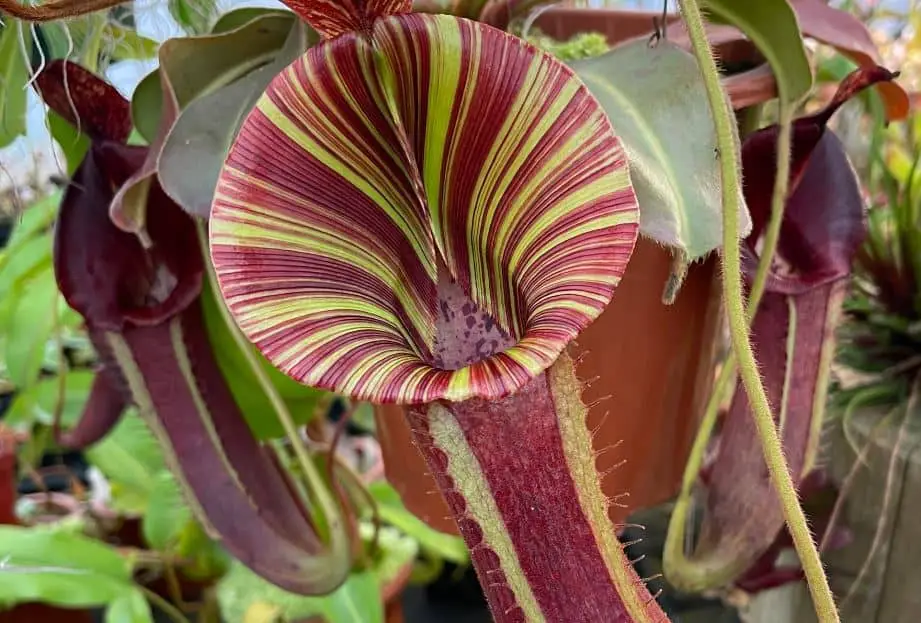Pitcher plants seem to be an uncommon, foreign plant, yet they are, in fact, native to several regions of the United States. They may be found in areas of Louisiana and Mississippi with low soils, where they must get their nutrients from other sources. The plants are carnivorous, and their fleshy tubes and funnels serve as traps for insects and other tiny creatures.
It is usual to grow pitcher plants inside, but it takes some skill to grow them outdoors. Learn how to cultivate a pitcher plant for a fascinating talking point in your home’s interior or outdoor garden.

Pitcher Plant Types
Around 80 varieties of pitcher plants fall within the Sarracenia, Nepenthes, and Darlingtonia genera.
Since Nepenthes are tropical pitcher plants, not all are suited for outdoor growth. On the other hand, the purple pitcher plant (Sarracenia purpurea) is highly tolerant of several climates and has a zonal tolerance range of 2 to 9. The purple variety is the northern pitcher plant, which grows naturally in Canada. It works well in moderate to chilly climates.
Texas and Florida’s marshy regions are home to the yellow pitcher plant (Sarracenia flava).
Warm-season plants include the parrot pitcher (Sarracenia psittacina) and the green-spotted pitcher (also known as the yellow pitcher). Both are not for sale since they are listed as endangered species. They also shouldn’t be taken from the wild.
Only extreme northern California and southern Oregon are home to cobra pitcher plants or Darlingtonia, California. Additionally, they are harder to grow.
Starting a pitcher plant garden with a native or climate-adaptable species is the best way to ensure success.
Growing Pitcher Plants
Growing pitcher plants is simple as long as you pay attention to a few important details. The peculiar form and predatory behavior of pitcher plants result from nutritional shortages in their natural soil. The plant captures insects to collect the nitrogen they contain since the areas where they grow are nitrogen-deficient.
The location and soil are the first steps in growing pitcher plants outside and in plant maintenance. They need a medium that drains well but does not require rich organic soil. Pitcher plants in containers need well-drained soil. Use any container for indoor plants and supply a low-fertility mixture for the plants to thrive in. One plant that does well in a combination of peat moss, bark, and vermiculite is the potted pitcher plant. They may thrive in a terrarium or even a tiny planter.
The soils where outdoor specimens grow are somewhat acidic. Pitcher plants may even flourish in water gardens but must be kept moist. The plants will thrive near the edges of a pond or bog garden since they need soggy, damp soil.
Pitcher plants do well in all sunshine to partial shade.
Pitcher Plant Care
Pitcher plants need little maintenance. When cultivated indoors, pitcher plants do best at temperatures between 60 and 70 F (16-21 C). With suitable orchid food, indoor plants should be fertilized at the beginning of the growing season and once a month until autumn.
The majority of the nutrients that plants need are captured by the insects that grow in the pitcher-shaped structures. As a result, fertilizing pitcher plants outside is optional.
Naturally, pitcher-shaped leaves on outdoor plants wilt. Cut them off when they start to wither. The rosette base will produce new leaves. Pitcher maintenance protects underground plants from freezes by piling mulch around the rosette’s base.


